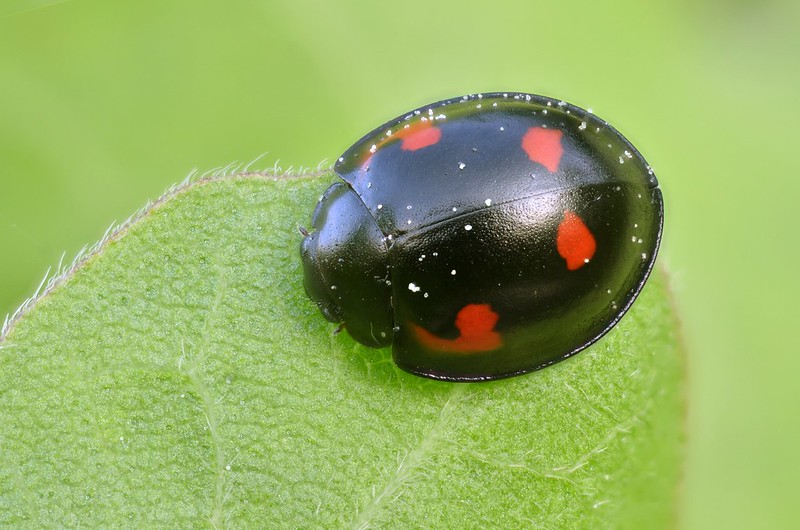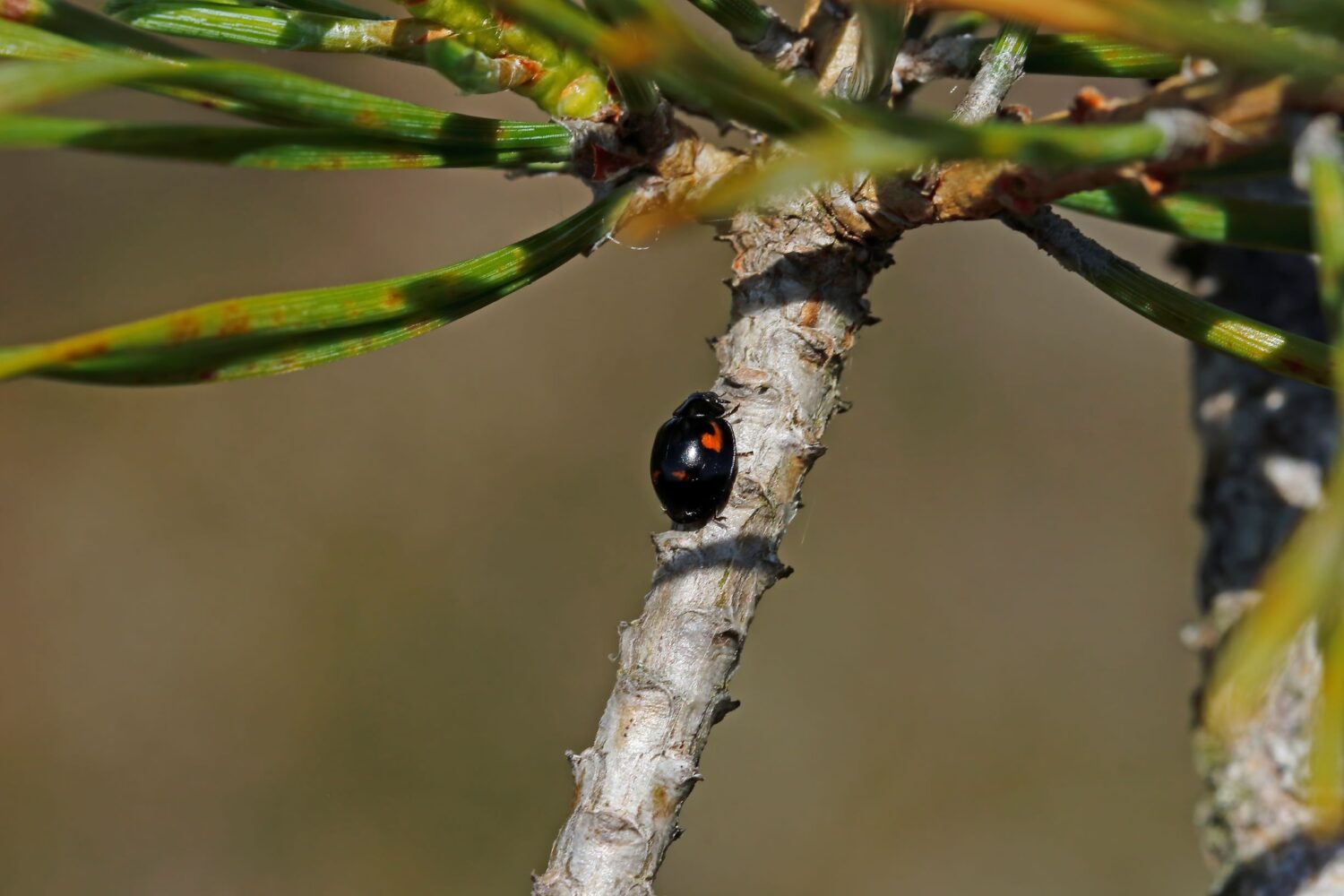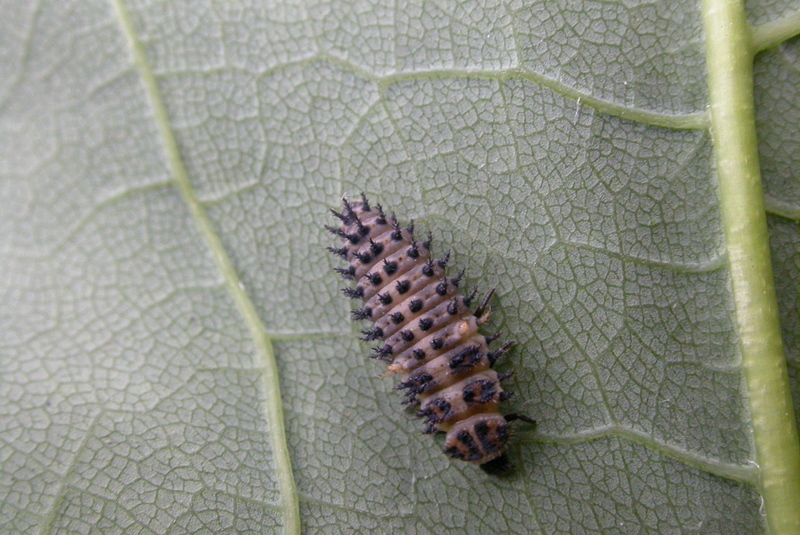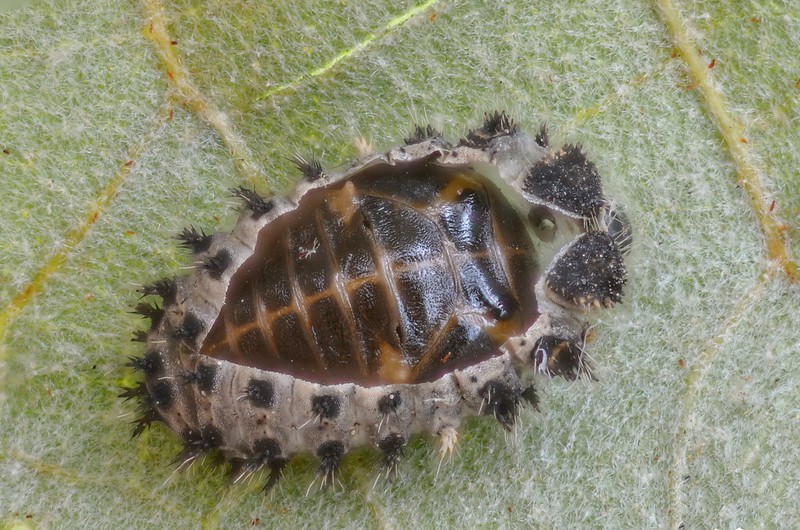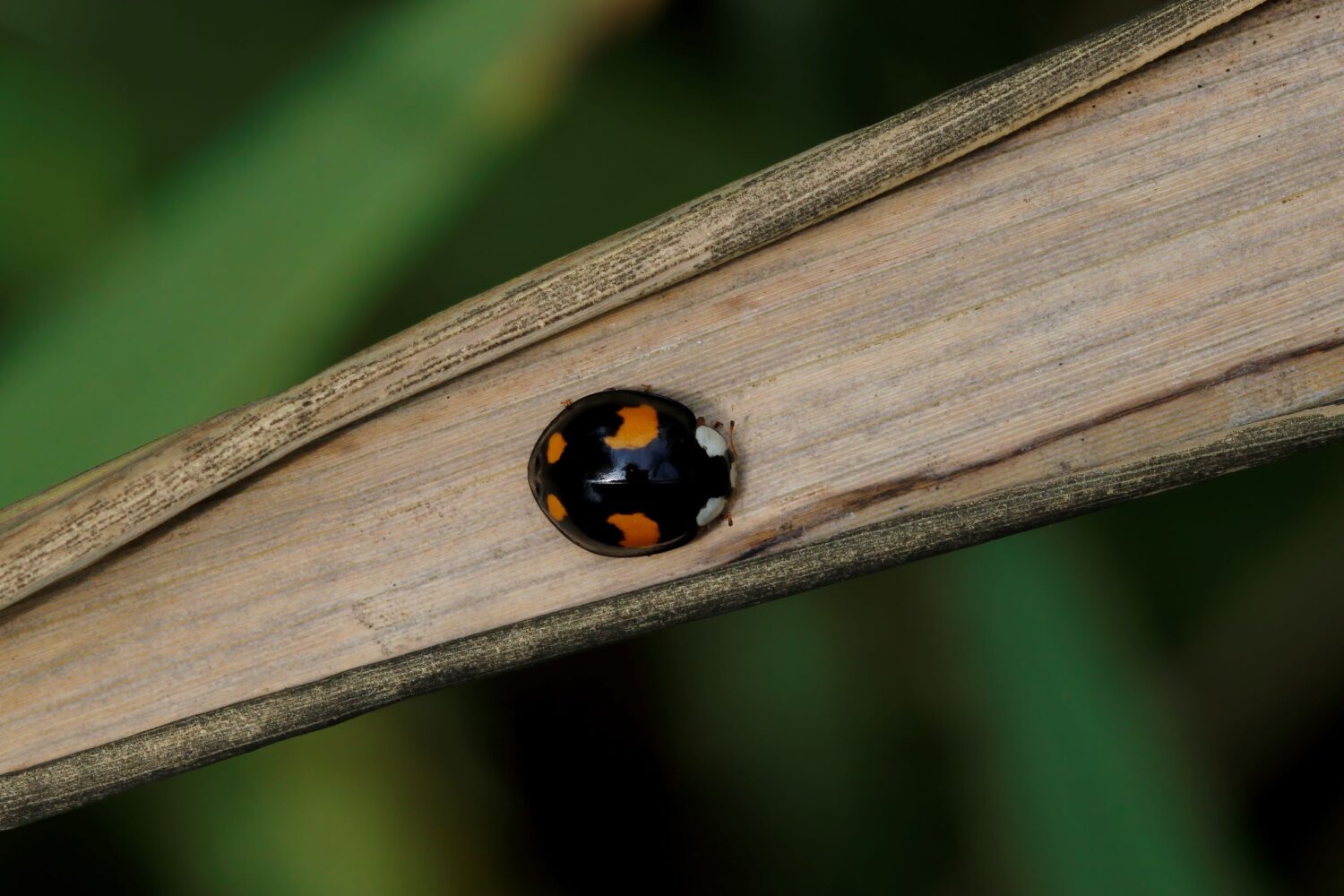The Pine Ladybird is black with four red spots, two of which are comma-shaped. There are very few records in the North East.
Fast facts
- Common name(s)
- Pine Ladybird
- Scientific name
- Exochomus quadripustulatus
- When to see it
- Year round
- Diet
- Scale insects and woolly aphids
Description
Despite its name, the Pine Ladybird can be found on a wide range of deciduous and coniferous trees. The Pine Ladybird is black with four red spots, two of which are comma-shaped. Widespread in the UK, but with very few records in the North East.
Identification
Adults
Adults are black with four red spots and are 3 – 4.5mm in length. A distinctive feature is the comma-shaped red spots at the front of the elytra (wing cases). The elytra also has a distinct rim around the edge. More rarely, adults have two red spots.
Larvae
Late stage larvae are grey and spiny. Thee tubercles are white on each side of the first abdominal segment.
Pupae
Pupae are black and shiny with paler brown markings. The grey larval skin encloses the lower part of the pupa and so the spiked tubercles are visible.

Spotted this ladybird?
Share your sighting of this and other North East Ladybird Spot target species to contribute to the conservation and study of our region’s ladybirds.
Similar species
Harlequin Ladybird
This species may be confused with the black forms of Harlequin Ladybird, particularly f. spectabilis. However, the Harlequin Ladybird is larger, has white on the protonum and does not have the distinctive rim around the edge of the elytra. The Harlequin Ladybird is one of the Ladybird Spot target species and its species profile can be found here
2-spot Ladybird
The black form of the 2-spot Ladybird (f. quadrimaculata) is similar but lacks the comma-shaped spots and has white markings on the pronotum. The pronotum of the Pine Ladybird is black. The 2-spot Ladybird is one of the Ladybird Spot target species and its species profile can be found here
Ecology
Despite its name, the Pine Ladybird can be found on a wide range of deciduous and coniferous trees and in many other habitats including woodland, grassland and coastal habitats. The Pine Ladybird overwinters in leaf litter, foliage and bark crevices often on the warm south side. It is one of the first species to emerge from overwintering and can often be seen basking in late winter or spring sunshine.
Did you know?
The Pine Ladybird is one of the most widely distributed species of ladybird. Originally found in Europe, Asia and North Africa, the Pine Ladybird has been introduced to Australia and the United States as a potential biological control agent.
Regional Distribution
There are few records of the Pine Ladybird in the North East. Elsewhere the Pine Ladybird is commonly found in urban habitats. The Pine Ladybird is a very widespread species in England and Wales, with some records from Scotland.
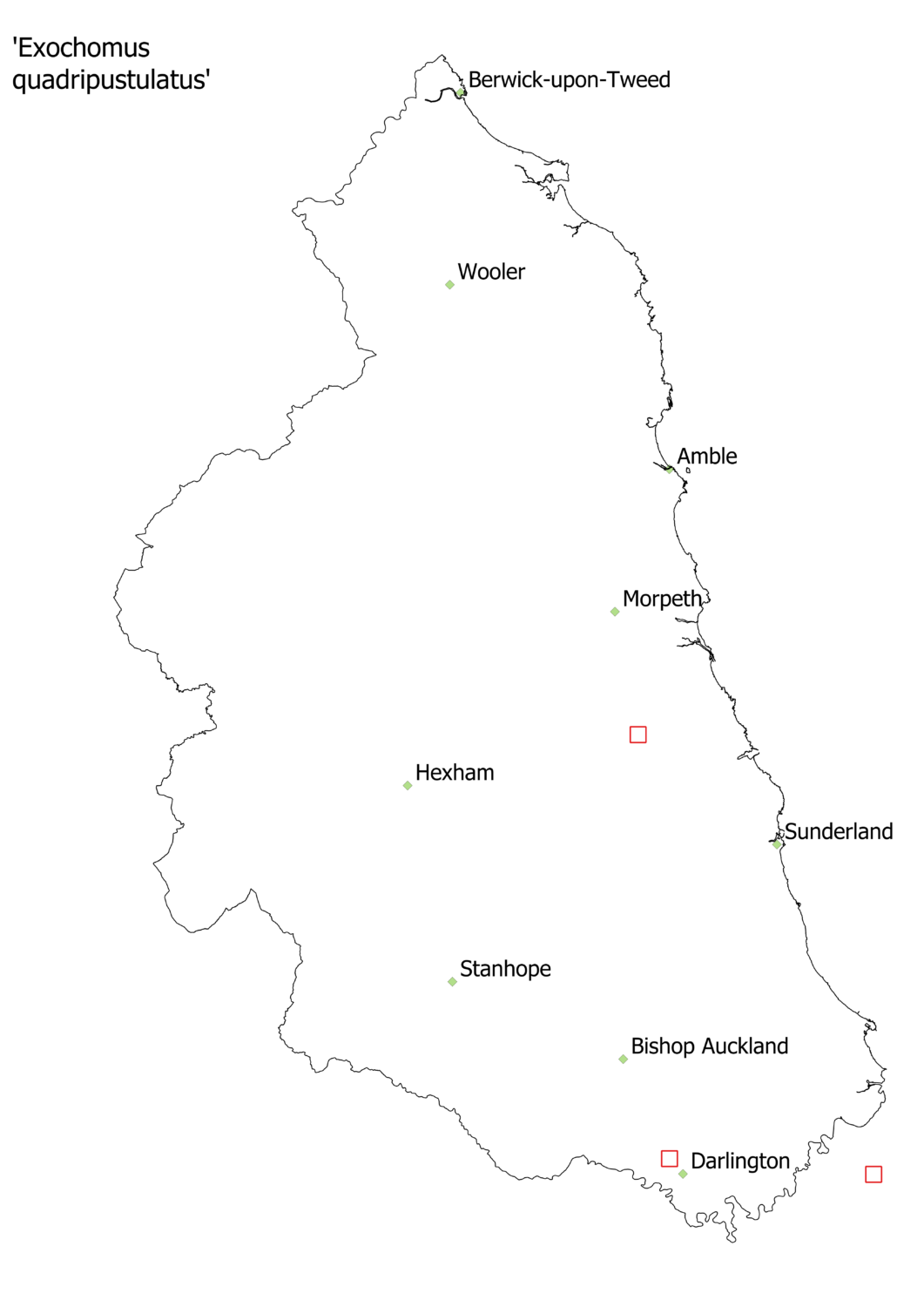
Distribution map of Pine Ladybird (ERIC North East data)
